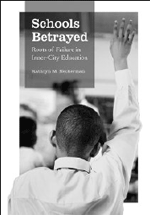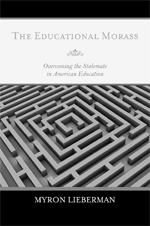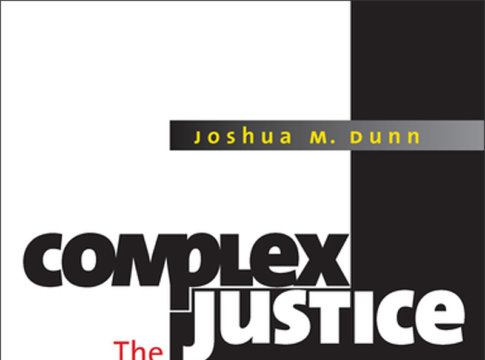Let’s Kill Dick & Jane: How the Open Court Publishing Company Fought the Culture of American Education
By Harold Henderson
St. Augustine’s Press, 2006, $26; 168 pages.
As reviewed by Diane Ravitch
This book tells the story of Blouke Carus’s heroic but ultimately unsuccessful attempt to reform American education. Carus founded the Open Court Publishing Company in 1962 with two aims that did not seem to be at all contradictory: first, to teach children to read, and second, to do so while introducing them to classic children’s literature.
Carus was an engineer, not a professional educator, which may explain why he thought that he could revolutionize the schools and overturn the publishing industry merely by creating a superior product. He proved to be hopelessly idealistic and naive, traits not usually associated with engineers. Even though his company’s elementary reading textbooks achieved superior results, at best, according to this account, they garnered 2 to 3 percent of the national market for reading books. The company died struggling to find the formula that would make the Open Court readers acceptable to the nation’s teachers and administrators. Few seemed to care that reading scores soared in the districts that used the books, nor did anyone notice that the contents of the books were richer and more substantive than the competition.
Carus became active in school reform activities in the 1950s, first as a parent who ran for the local school board and joined the Council for Basic Education. In 1959, he and his wife Marianne spent some time in Germany, where their son, Andre, attended 1st grade; later that year, he entered the same grade in LaSalle, Illinois. The parents were “horrified” to discover the contrast between the two schools: the boy’s German textbooks contained stories and poems; his American schoolbooks were richly illustrated but had almost no text.
A few years later, while he was hospitalized for a stomach ailment, Carus read Arther Trace Jr.’s What Ivan Knows That Johnny Doesn’t, which compared the rich content of Russian textbooks to the vacuity of Dick and Jane readers in American schools. By 4th grade, Trace wrote, the Russian children’s reading vocabulary was nearly 10,000 words, while their peers in American schools had been exposed to a carefully controlled vocabulary of fewer than 1,800 words. Carus was inspired; he knew what he had to do: he would take on and break the monopoly of the dumbed-down Dick and Jane–style readers. His determination was fueled by the belief that it should be possible to “educate our masses as rigorously as Europeans do their elites …”
At the time that Carus got his inspiration, the public schools were thoroughly infested by a deeply rooted spirit of anti-intellectualism. The life-adjustment philosophy was the reigning paradigm, which decreed that 60 percent of all students were fit for neither an academic nor a vocational education and needed to be adjusted to their lowly role in society. The dominant reading philosophy was the whole-word (“look-say”) method, enshrined in the simple-minded Dick and Jane–style reading books, which taught children to memorize the shape of words through repetition and ignored phonics altogether. That was the mountain that Carus planned to climb.
Carus’s wife Marianne became his partner in assembling the readers. They disregarded the controlled vocabulary that was a staple of the look-say readers. The first year, readers began with intensive phonics, then offered excellent children’s stories and poems. Instead of grouping children by ability, the Open Court readers advised teaching the whole class and encouraged student chanting.
In the 1963 Open Court reader, titled Reading Is Fun, which was designed for the second semester of 1st grade, at least half the entries were classics, including Aesop’s fables (“The Fox and the Grapes,” “The Hare and the Tortoise,” “The Boy Who Cried Wolf”); Mother Goose rhymes; folk tales (“The Little Red Hen,” “The Gingerbread Boy,” “The Three Billy Goats Gruff,” “The Three Bears”), and poems (by Vachel Lindsay, Robert Louis Stevenson, and Christina Rossetti). Henderson points out that the best-selling reader published by Scott Foresman for the same grade contained only 7 folk tales out of 48 selections, and they were watered down because of restrictions on vocabulary.
Districts that tried Open Court reported outstanding success: more children were posting higher reading scores. Nonetheless, the complaints poured in from “the field”: the readers were too hard; they were too different; they didn’t have the worksheets that teachers expected; they didn’t have the comprehension questions that teachers needed. At one point, feminists blocked their adoption in textbook hearings because they included more stories about males than females. The company spent enormous resources responding to the complaints, revising the reading books, hiring academic consultants, trying to reach out to a market that was entirely satisfied with the usual pap from the major publishers.
When the whole-language movement began its meteoric rise in the 1980s, Open Court was demonized because of its emphasis on phonics. When the company failed to win adoption by the state of California in 1988, which was in thrall to the whole-language faction, the outlook for Open Court was bleak indeed. In 1996, the company was sold to SRA/McGraw-Hill, which revised the books to meet the market’s demands, enjoyed the right political climate, and saw the healthy sales that eluded the Carus family.
Henderson goes to great lengths to demonstrate that the Open Court readers did not deserve their reputation as “traditional” and “conservative,” although they were indeed traditional and praiseworthy for their inclusion of large amounts of classic literature. And if the inclusion of excellent literature means “conservative,” then there is no reason to run from the label.
Henderson tries to persuade the reader that the books should have been congenial to whole-language teachers because of their superior literature selections and should have been embraced by progressive educators because they blended the best of both approaches, including workshop activities, so-called reciprocal teaching (where the teacher and the students take turns as teacher), and other practices that were embraced by progressives. He never adequately explains why progressives did not see the obvious virtues of the Open Court readers (my guess is that any reader that paid any attention to explicit phonics was doomed in the eyes of progressives, at that period in history).
Henderson even buys the canard that the Caruses’ efforts to promote “high culture” were doomed by mass enrollments, as though it were an obvious truth that the children of the poor could never appreciate classic fairy tales and myths, a rather questionable assumption. Even so, Let’s Kill Dick & Jane is a fascinating and rather depressing read, explicating for all the world to see how an ambitious textbook series with rich content and beautiful illustrations died the death of a thousand cuts, administered by ideologues, bureaucrats, and the dumbed-down culture of American education.
Ultimately, the life and death of the original Open Court readers demonstrate that American education is a challenging environment for the industry that supplies its needs. Ralph Waldo Emerson said that if you build a better mousetrap, the world will beat a path to your door. Blouke and Marianne Carus learned that this is not true, that the market is shaped more by fads and ideology than by evidence about what works best for children.
Diane Ravitch is research professor of education, New York University, and a member of the Koret Task Force at the Hoover Institution, Stanford University.





